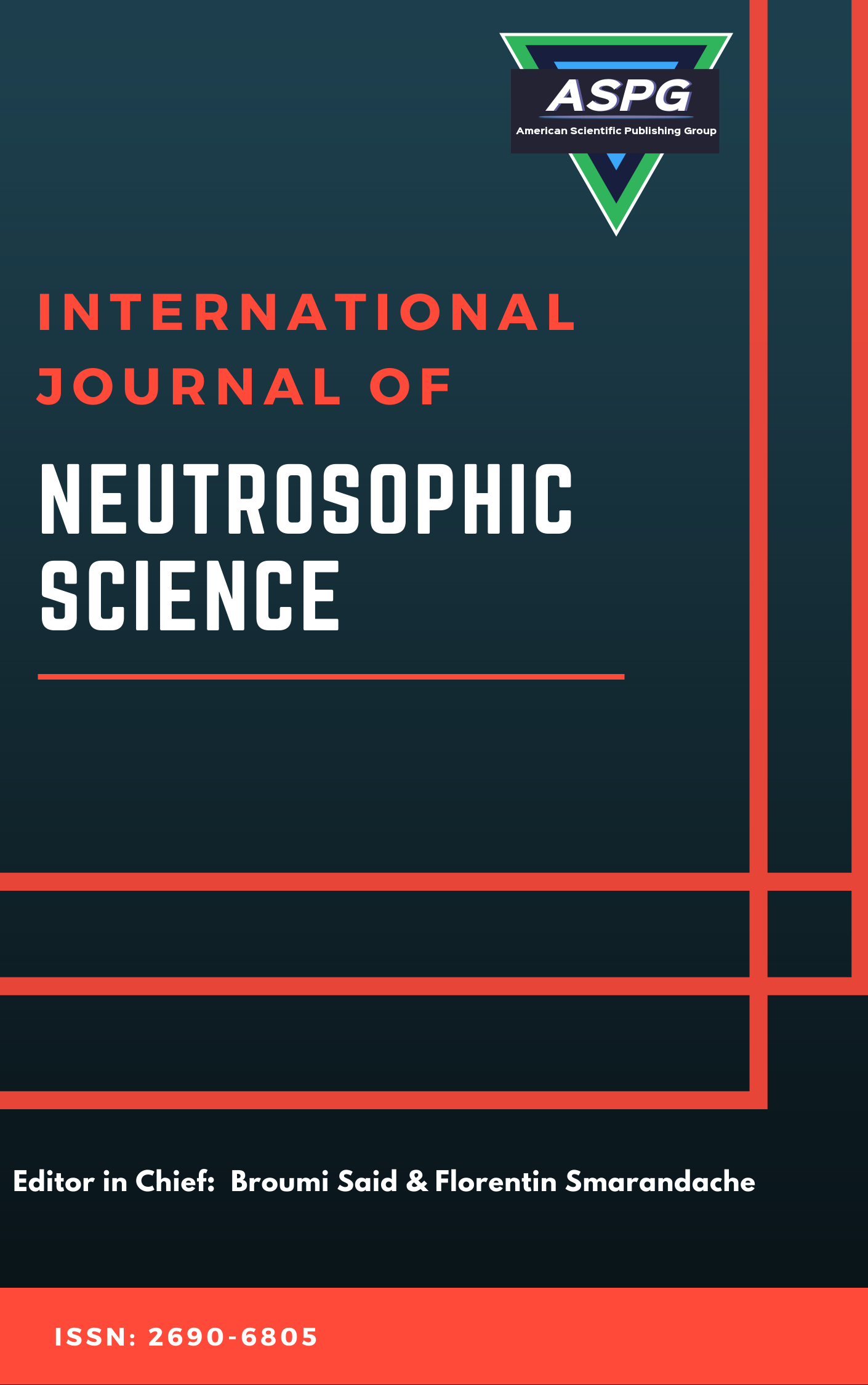

Volume 26 , Issue 3 , PP: 388-399, 2025 | Cite this article as | XML | Html | PDF | Full Length Article
Verónica Alicia Vega Martínez 1 * , Danna Carolina Oliveros Acosta 2 , Patricia Alexandra Guajan León 3
Doi: https://doi.org/10.54216/IJNS.260329
The purpose of the study was to implement a patient classification for cleft lip and palate (CLP) patients according to their overall etiopathogenic risk profile given the multifactorial yet uncertain etiology of the disorder. To do this, a novel approach was made based on Plitogenic Fuzzy Soft Set Theory, which accommodates the simultaneous inexactness of clinically and epidemiologically derived information, ambiguous relationships of risk factors and indeterminacy of absent or conflicting information. A series of etiopathogenic parameters (genetic, environmental, and behavioral) were proposed as attributes and a set of plitogenic membership functions was used to assess each patient. Major findings enabled the classification of patients into certain risk levels (e.g. , high genetic risk, environmental dominance with less caution, mixed risk but dominantly high indeterminacy) and reveal factor composition patterns that would otherwise be invisible to classical statistical analyses. It was concluded that this model provides a superior clinical decision support system that is personalized since it quantifies the uncertainty of FLAP's etiology for more accurate risk stratification and preventative or early intervention planning more applicable to the complicated reality of all patients.
Cleft lip and palate , Patient classification , Risk profile , Etiopathogenic , Diffuse soft tissue sets , Plitogenic logic , Clinical decision making
[1] K. L. Howe et al., “Genetic associations and functional characterization of MIR140 in orofacial clefting,” Human Mutation, vol. 40, no. 11, pp. 2055–2066, 2019, doi: 10.1002/humu.23865.
[2] P. A. Mossey, J. Little, R. G. Munger, M. J. Dixon, and W. C. Shaw, “Cleft lip and palate,” The Lancet, vol. 374, no. 9703, pp. 1773–1785, 2009, doi: 10.1016/S0140-6736(09)60695-4.
[3] C. O. e Silva et al., “A comprehensive care program for cleft lip and palate in a Brazilian national reference center: 15 years of experience,” The Cleft Palate–Craniofacial Journal, vol. 59, no. 1, pp. 91–100, 2022, doi: 10.1177/1055665621991205.
[4] S. R. Vieira, R. M. C. e Silva, and M. R. M. Souza, “Limitations of traditional statistical models in dealing with complex multifactorial diseases: The case of oral clefts,” Brazilian Oral Research, vol. 35, p. e099, 2021, doi: 10.1590/1807-3107bor-2021.vol35.0099.
[5] D. Molodtsov, “Soft set theory—First results,” Computers & Mathematics with Applications, vol. 37, no. 4–5, pp. 19–31, 1999, doi: 10.1016/S0898-1221(99)00056-5.
[6] L. A. Zadeh, “Fuzzy sets,” Information and Control, vol. 8, no. 3, pp. 338–353, 1965, doi: 10.1016/S0019-9958(65)90241-X.
[7] W. C. Shaw, B. C. Semb, and A. S. T. L. Team, “The Eurocleft study: Intercenter study of treatment outcome in patients with complete cleft lip and palate. Part 5: Discussion and conclusions,” The Cleft Palate–Craniofacial Journal, vol. 42, no. 1, pp. 93–98, 2005, doi: 10.1597/02-119.5.1.
[8] F. Smarandache, “Plithogeny, plithogenic set, logic, probability and statistics: A brief review,” Journal of Computational and Cognitive Engineering, vol. 1, pp. 47–50, 2022.
[9] P. K. Maji, R. Biswas, and A. R. Roy, “Soft set theory,” Information and Mathematics with Applications, vol. 45, pp. 555–562, 2003.
[10] J. C. R. Alcantud, A. Z. Khameneh, G. Santos-García, and M. Akram, “Systematic literature review on soft set theory,” Neural Computing and Applications, vol. 36, pp. 8951–8975, 2024.
[11] H. Qin, Q. Fei, X. Ma, and W. Chen, “A new parameter reduction algorithm for soft sets based on the chi-square test,” Applied Intelligence, vol. 51, pp. 7960–7972, 2021.
[12] H. J. Kim and J. H. Lee, “Neutrosophic logic-based decision-making in smart agriculture,” Agriculture, vol. 11, no. 7, p. 672, 2021, doi: 10.3390/agriculture11070672.
[13] M. Khalil, A. M. Zahran, and R. Basheer, “A new diagnostic system for kidney disease detection using a fuzzy decision-making problem,” Mathematics and Computers in Simulation, vol. 203, pp. 271–305, 2023.
[14] M. A. Alshahrani, A. A. Alqahtani, and A. A. Alharbi, “Neutrosophic decision-making model for urban water management,” Water, vol. 13, no. 3, p. 339, 2021, doi: 10.3390/w13030339.
[15] R. C. M. A. de Almeida and I. C. B. de Lima, “A neutrosophic approach to evaluate the performance of renewable energy sources,” Renewable Energy, vol. 164, pp. 1010–1020, 2021, doi: 10.1016/j.renene.2020.09.054.
[16] A. Alzahrani and M. M. Khedher, “A new approach to fuzzy-neutrosophic decision-making in the context of smart cities,” Sustainability, vol. 13, no. 5, p. 2671, 2021, doi: 10.3390/su13052671.
[17] S. K. Sharma, A. K. Gupta, and R. Kumar, “Neutrosophic logic-based decision-making for supply chain management,” Mathematical Problems in Engineering, vol. 2021, Article ID 8821543, 2021, doi: 10.1155/2021/8821543.